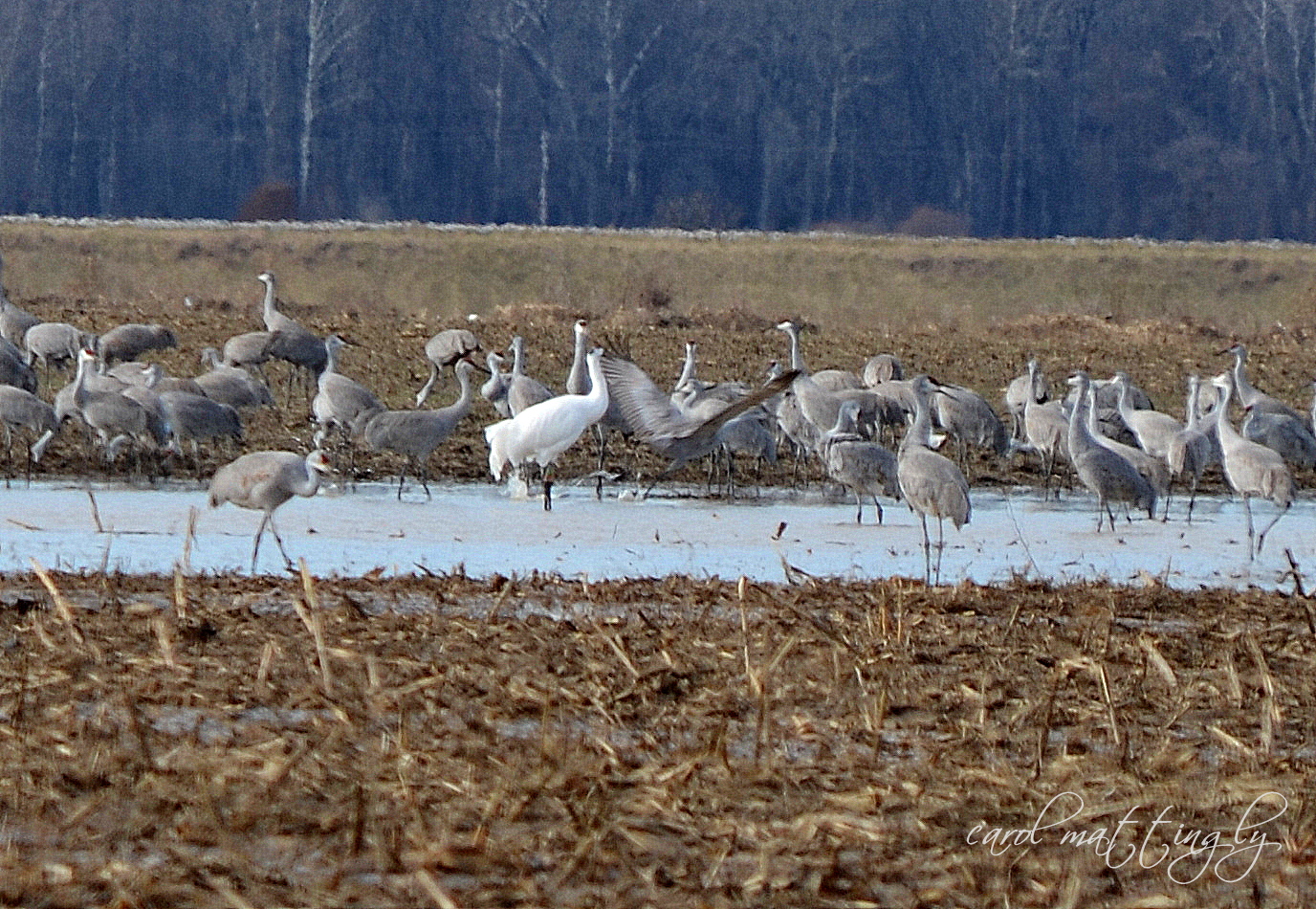Worthy of note: the Whooping Cranes started showing up in Texas after they blew the fuck out of New Mexico. I used to be dragged down to the Bosque every year to try and find the fuckers. Usually they were a white spot or two in a sea of gray sandhills. Drought, continued loss of habitat, and a proliferation of people and their power lines - a main source of whooping crane fatalities - doomed the recovery effort. By 1999, the Fish and Wildlife Service moved the recovery effort back east where, Stehn says, people quickly embraced the project. "It's unfortunate we let a natural resource like that go," says Clegg, who believes that the Fish and Wildlife Service caved in to pressures from hunters and developers. Stehn disagrees. "Populations die. That's what populations do," he counters. While none of the reintroduction programs worked in the West, scientists learned lessons for future work, he says. For one, Stehn says, Ultralights are now helping create a new whooping crane flyway between Wisconsin and Florida. At Bosque del Apache, the success back East is little consolation. "I miss the whoopers," says Robert Kruidenier, with familial affection, adding that the last crane he saw here, in the fall of 2000, was a female.
But Clegg's effort was too little, too late, says Tom Stehn, who heads the U.S. Fish and Wildlife Service's national Whooping Crane Recovery Program and was also part of the failed cross-foster project. For years, Stehn had heard complaints about the whoopers, from residents along the Rocky Mountain Flyway in New Mexico, Idaho and Utah. Bird hunters said the federally protected whooping cranes interfered with their right to shoot sandhill cranes. Developers and farmers said they couldn't subdivide farmland or spray crops because of the regulations protecting the bird.